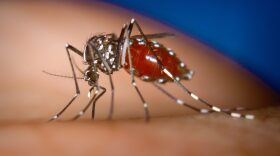Some marine organisms have adapted to living with ocean debris.
An interagency group of researchers including the University of Hawaiʻi is studying animals and plants coexisting with trash in the upper layers of the open sea — or pelagic zone.
Researchers are using samples from plastic accumulated in the Great Pacific Garbage Patch from Japan after the 2011 Tohoku tsunami.
Nearly 300 species traveled through the Pacific Ocean with the trash and created a unique ecosystem. Shellfish such as mussels and clams latched on and grew on the trash, and large marine mammals and fish followed.
Nikolai Maximenko is a senior researcher at the UH International Pacific Research Center. He used his knowledge on ocean currents to predict where the trash would most likely travel, and relayed the information to the Ocean Voyages Institute for cleanup.
When asked what would happen if all the plastic were to be removed from the ocean, Maximenko said, "They will die. And this is a great question because they don’t live alone like you have one individual here or there, or one kind of species."
"They really create an ecosystem. And this ecosystem attracts other marine life — fish and sea turtles and seabirds and mammals. We need to be really careful," Maximenko told HPR. He says ocean management must work in cooperation with cleanup.
The Smithsonian Environmental Research Center is continuing to study and label all the organisms learning to thrive through trash.





